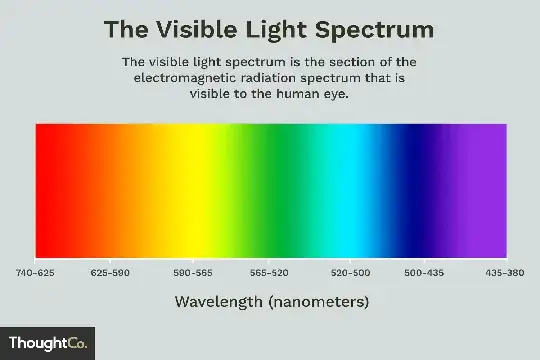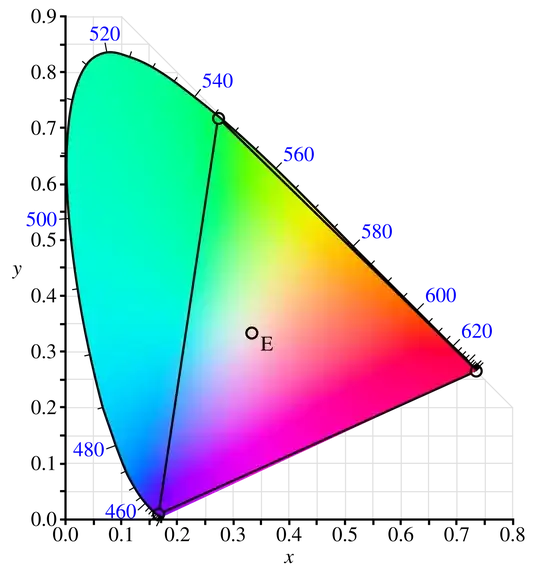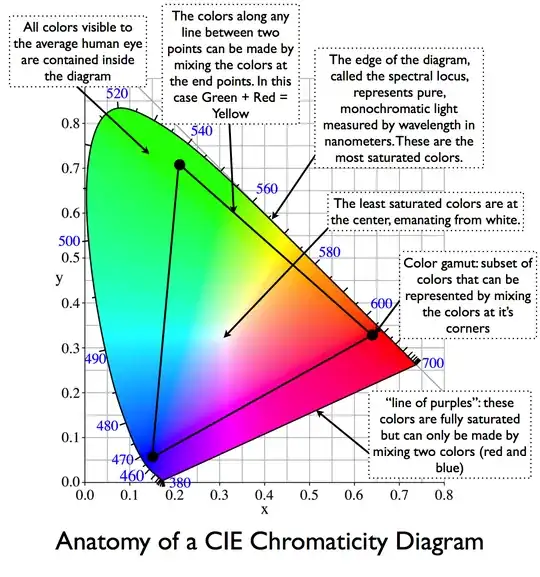Is it true that we can only see colors that lie in the visible spectrum? If yes, then why can colors like RGB $(168, 151, 80)$ be seen by humans?
Let us suppose that we are at the extremely red part of the visible light spectrum; then, the RGB value will be $(255, 0, 0)$. If we start going to the right-side of it, then the value of the red component starts to decrease, and the value of the green component starts to increase, but since we have not crossed the green part yet, the value of the blue component will be zero. Once we reach the green part, the RGB value will be $(0, 255, 0)$. Now, when we go further to the right, then the value of the green component will start to decrease, and the blue component will start to increase. So, at any given time, at least the RGB values will be zero.
So, colors like RGB $(168, 151, 80)$, in which all 3 components are nonzero, do not lie within the visible light spectrum and cannot be seen.
Here is the photo of the visible spectrum that I am referring to.


